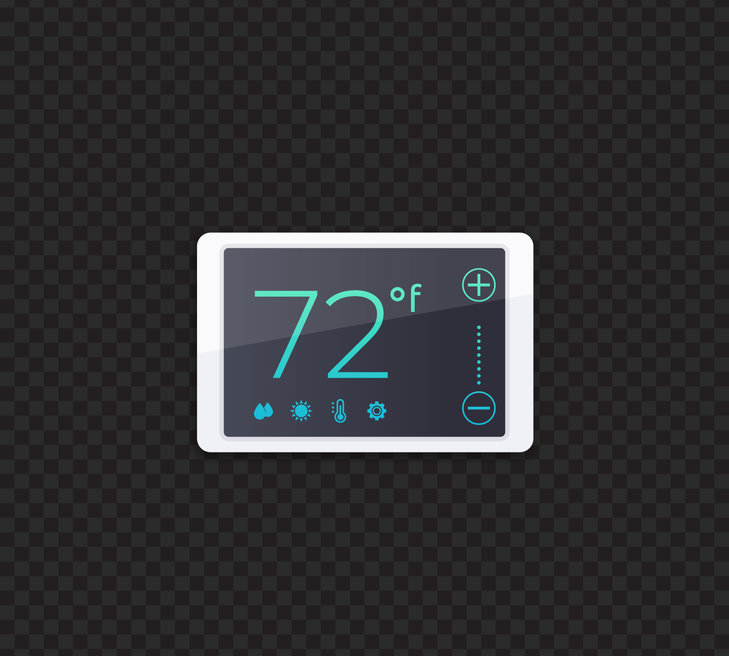Many homeowners find themselves in a dilemma when they have to choose between keeping their home’s thermostat at a comfortable temperature and keeping their energy bills at a minimum. The Department of Energy recommends the best average temperature to keep you are AC on. Be it a personal level of comfort, energy savings, or a combination of both, you can use this advice as a starting point to figure out the best AC setting for your priorities. This article highlights the recommended AC temperature setting for energy efficiency, why it matters, and what you can do to save on your heating and cooling costs.
Standard Temperature Setting To Keep Your AC On
One of the best ways to keep your home cool in summer while saving on utility costs is to keep the thermostat setting as comfortably as possible when home, and setting it warmer than usual when no one is around. The standard temperature for your air conditioner should be set between 78 degrees Fahrenheit for cooling in summer. You can set it to 82 degrees Fahrenheit when sleeping and 85 degrees Fahrenheit when away from home.

For maximum energy efficiency during winter, it is recommended to set your AC’s thermostat between 64 to 68 degrees Fahrenheit to keep your home warm. It is important to keep in mind that these temperatures are only ideal for people who live in a moderate climate. Temperature differences may vary from one region to another and the most comfortable temperature to keep your AC on does not necessarily mean that it is good for everyone. It only depends on the context in which the term is used as well as climate differences in your area.
Why Does it Matter?
According to the US Department of Energy, the recommended temperatures are intended to act as a starting base point and only apply while you are at home. Since the climate varies from one region to another, there could be slight variations in the AC temperature setting in different homes based on individual preferences. However, setting the temperature at 78 degrees Fahrenheit during summer and 68 degrees Fahrenheit during winter guarantees maximum energy savings of up to 10 percent per year on utility costs.
The normal temperature for the human body ranges between 36-37 degrees Celsius. A temperature closer to 78 degrees Fahrenheit (25°C) is said to be healthy and comfortable for the human body, especially for people living in tropical regions. However, finding the optimal temperature while aiming for lower utility bills could require a lot of tweaking to find what works best for your region or area.
How to Keep Your AC Energy Bills Low
- Set Your Thermostat High
The rule of thumb for air conditioners is that the higher you go the more money you save. This means lower thermostat settings drain a lot of money from your pocket in terms of monthly energy bills. If you can maintain a temperature that is between 10 to 15 degrees higher than what you are used to for at least 8 hours, then you can save up to 10 percent on your cooling costs every year.
- Your Home Should Be Well-Ventilated
A poorly insulated home is one of the major factors that wastes a lot of energy on the AC unit. There is no doubt that older houses lack sufficient insulation since seals are more weathered and worn, and cracks are very common. Have a contractor or a utility provider check to ensure your home’s insulation is at par.
- Clean Your Air Filters
Air filters in air conditioners collect all kinds of dust and debris over time that restricts airflow. An AC unit will work very hard to cool your home when airflow is interrupted and when it strains too much, it will use more energy. Instead of waiting for your filters to clog up, you need to clean them every 1 to 3 three months to ensure free flow of air.
- Use Ceiling Fans
When you install ceiling fans, your AC unit will not have to work hard to send cool air into the room. They help to circulate cool air throughout the entire house. Improved air circulation from the ceiling fans can allow you to increase your thermostat to at least 4 degrees higher without sacrificing comfort.
The temperature settings in every home can never be the same since different people have different ‘comfort’ levels based on their AC’s thermostat setting. Although there is a standard temperature to keep your AC on for energy efficiency, you can always tweak the settings until you find your ideal temperature range. A programmable thermostat can also save you time and effort as it changes the temperature automatically with less input.
